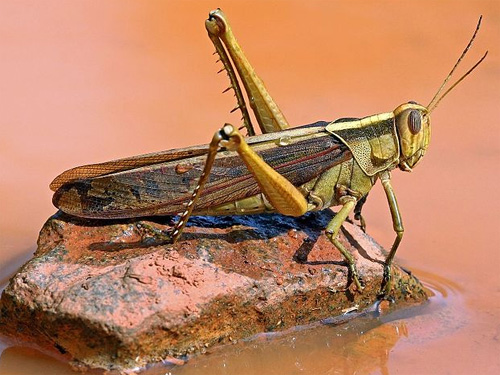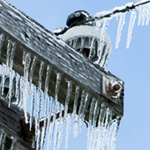Insect Swarms
Insects make up about eighty percent of the species of the world. Sometimes they gather together in large groups, called a swarm. A swarm can be harmless, like cicadas that emerge approximately every 17 years to reproduce. Even though there are billions of them, as many as 1.5 million cicadas per acre, they're not pests. They don't eat crops or harm people; they just have sex and die. The same is true of mayfly swarms, which emerge from the water for the sole purpose of reproduction. Mayflies don't have mouths, so crops are safe while birds and fish get to eat their fill.

Mayfly photo taken by Marcel Karssies
Bees are another insect that swarms, but their numbers and reach are significantly smaller. It can certainly be devastating if 10,000 bees invaded your home, but they won't destroy a community.

A swarm of Western honey bees by Bidgee.
Ants are surprisingly sophisticated, creating supercolonies that stretch across thousands of miles and are made up of hundreds of millions of individuals. Most of the time, they're like bees. If they surround you and start biting, it can be painful or fatal if there are enough or you're allergic to them. But the idea that they march on communities and kill anything in their path is a vast exaggeration. When an army of ants marches, their primary prey are all the creatures that live in the leaf litter.

Western Harvester Ant Swarm on Seedskadee National Wildlife Refuge - Photo: Tom Koerner/USFWS
The insect swarm that brings widespread death and destruction is the locust. They start as grasshoppers, which tend to be solitary, and their numbers rarely make them a threat. However, with the right weather, their numbers can explode. A drought, followed by rain and rapid vegetation growth, triggers a dramatic change. Suddenly they start gathering together in large numbers, breeding and racing through the countryside. Bands of locusts are known as plagues, and they can devour the vegetation and strip a field clean in a few hours. Millions of locusts swarming have caused famines and forced people to migrate from their homes.

Garden locust from Charles J. Sharp of Sharp Photography.
Fortunately, with modern surveillance and pest control methods, locust swarms have been significantly reduced.
Preparation - Survival
The best way to survive an insect swarm is to know how to handle the threat you're confronted with. The following videos will give you details on what to do with bees, ants, mosquitoes and locusts.
The Only Way to Escape a Swarm of Bees
A Natural Way to Get Rid of Ants in Your House
15 Natural Ways to Get Rid of Mosquitoes in Your Yard
How to Survive a Locust Attack
Return to 101 Ways to Die Home Page
This information is presented to make people aware of the larger world around them. If you can prepare for something as devastating as this, you're much more likely to be ready for smaller disruptions. Be aware and prepare.
6/6/2020
6/21/2021


